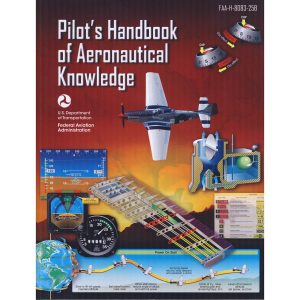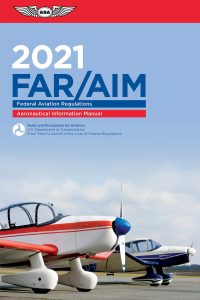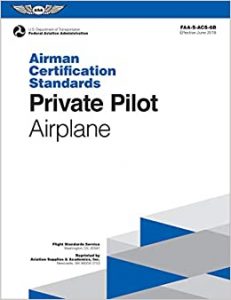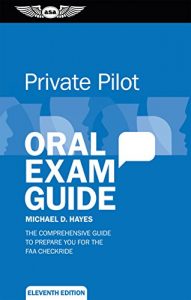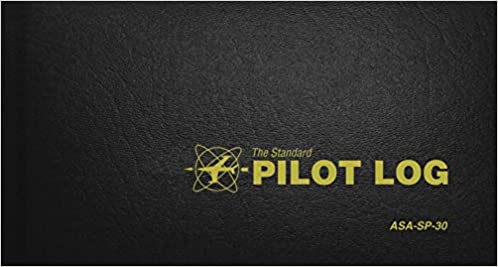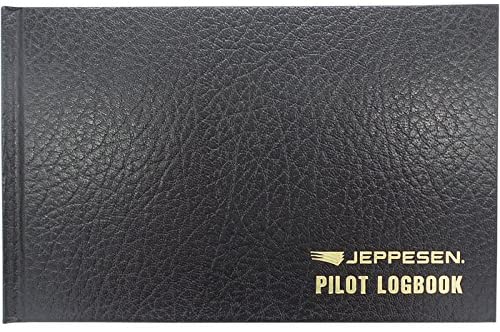Your Path to Becoming a Private Pilot
Start Here!
Before we get started, I want to share some tips for success!
1. Take a discovery flight! Call your local airport and see if they offer an intro flight with an instructor. This usually is about a half hour long and gives you an idea of what flying an airplane is like. It’s an excellent way to see how you like it before you invest a lot of time and energy in flight lessons. Plus it’s just “plane” fun!
2. Get your medical out of the way. More about this on the next tab, but you want to make sure you can pass a medical before you invest too much time and resources.
3. You get out of training what you put into it. Your instructor is there to guide you, but it’s up to you to do the work.
4. Study at home! The more studying you do at home, the less it will cost you, and the more you’ll get out of lessons.
5. Don’t be afraid to ask! That being said, don’t be afraid to ask for help! Or ask any and all questions. I don’t expect you to know everything and I love questions!
6. This is YOUR journey. You are the “pilot in command”. Your instructor is just here to help you achieve your goal. Also, we want and expect you to take charge. Your instructor will guide you, but take initiative. Don’t rely on your instructor to keep track of when your solo endorsement expires, or that you have all of the proper requirements and endorsements before you go take a checkride. Instructors are humans too, and sometimes things slip by us. If we both are keeping track, we have a backup system to catch something that may have been missed. Trust, but verify! Don’t be intimidated by the fact that your instructor “knows more than you.”
7. Sometimes and instructor and student don’t “click”. This does not mean the instructor is a bad teacher or that you are a bad student. It just means you don’t speak the same “language”. Don’t be afraid to ask to fly with a few more instructors to see who you gel with. We instructors have had this happen to us, we understand, and you won’t hurt our feelings 🙂
8. Keep a notebook to keep notes on your lesson. And always write down something you enjoyed or felt like you did really well on that lesson. Don’t always focus on what needs fixing.
9. Have fun! This journey is intense at times but oh-so-much fun!
Steps to Becoming a Private Pilot
1. Be 16 years old to solo. (17 years old for your Private Pilot Certificate.)
2. Apply for a Medical
3. Apply for a Student Pilot Certificate
4. Pass a written Knowledge Test at an approved testing center
5. Fulfill Flight Training Requirements
6. Pass a practical test (also known as a checkride) with an examiner
Let’s dig into each of these a little deeper!
1. Be 16 years old to solo. (17 years old for your Private Pilot Certificate.)
You can take flight lessons at ANY age! However, in order to solo (fly the airplane by yourself), you must be 16 years old. Some people like to take flight lessons before they turn sixteen and then solo on their sixteenth birthday! You must be 17 years old to take the Practical Test (see number 5).
2. Your Medical
You do not need a medical to start your flying lessons, but you will need it in order to fly solo! You can find a list of Aviation Medical Examiners (AMEs) in your state at this website here. When you call, simply let them know that you wish to get your “Third-Class Medical”. If it is your goal to fly professionally, apply for a First Class medical instead. It is very similar to the Third Class but with tighter constraints. If health issues or medications are a concern and you are not sure if you will pass a Third Class Medical, call your AME and ask for a “consultation” before you go for an exam. There is also a “Basic Med” option which you can read more about here. However, you will need to pass a Third Class Medical exam at least once to have “Basic Med”. I also highly recommend Captain Jenny Beatty’s article about what to expect on your medical exam here.
3. Student Pilot Certificate
Applying for a student pilot certificate is free! Find a flight instructor and they will help you with this process!
4. Pass a Knowledge Exam
This exam tests your knowledge about flight, the rules and regulations, and what you understand about the airplane. If you’re local, you can attend one of the Mentone Flying Club’s FREE biannual ground schools to prepare you for this exam, or do a home study course such as Sporty’s free test prep, Rod Machado’s Private Pilot course, or Gleim (these are just a few examples). Click here for my video on how to study and ace this exam!
Once you are ready to take the exam, you must go to an approved testing center, take a 60 question test on a computer, and pass with a score of at least 70%. You can find a list of testing centers in your area here.
The knowledge exam can be taken at any time during flight training. It only must be finished by the time you are ready to take your practical test. Some students like to take it before flight lessons so that it is done and they don’t have to worry about it. Other students prefer to take it later on in their flight training as some of the concepts make more sense once you’ve used them.
5. Meet the flight training requirements
The list below is a general overview. Click here for an official and complete list.
At least 40 hours of total flight time
– 20 hours of training from an instructor
- 3 hours instrument training
- 3 hours cross country training
- 3 hours night flight training
- 1 night cross-country of at least 100 nautical miles
- 10 takeoffs and 10 landings at night
- 3 hours of flight training in preparation for the practical test
– 10 hours solo flight time
- 5 hours solo cross country time
- 1 solo cross-country of 150 nautical miles with full stop landings at three points, and one leg of the flight at least a 50 nautical mile straight line distance between takeoff and landing locations
- 3 takeoffs and landings at an airport with an operating control tower
6. Pass the Practical Test
Once you’ve met all of the requirements for getting your Private Pilot’s certificate, and your instructor knows that you’re ready, he or she will sign you off to go take the “practical test”, also known as the checkride. You will meet with an examiner who will sit down with you and ask you questions to test your knowledge, and have you do practical things such as plan a cross country flight. This is called the “oral” portion of the exam. Then you will go out and demonstrate some of the maneuvers and landings that you’ve been practicing all along. Once you have passed this test, you are a certified Private Pilot!!!
The Private Pilot Library
This is a list of books and documents needed for your Private pilot journey. Most can be downloaded for free and/or bought off of Amazon.
Must have:
Pilot’s Handbook of Aeronautical Knowledge
FAR/AIM (current year) online is the most current, but I also recommend buying a paper copy on Amazon to tab and mark so you know and become familiar with where to find the regulations.
FAR/AIM:
Airmen Certification Standards (ACS)
Highly recommended:
Cessna Aircraft Maneuvers Guide
Note: These documents are for help and reference only and are never meant to take the place of your flight instructor. Always check with a certified flight instructor, official airplane manuals, and official FAA documentation during your flight training.
Affordable Private Pilot Starter Pack
There are many “starter packs” out there for the Private pilot student, you can get as elaborate or as simple as you want. I’ve listed the basics below.
1. A flight bag. This can be a special bag that will carry your headset, or just your favorite backpack or purse. Whatever makes the most sense for you. Sportys has many flight bags, but you don’t have to get anything expensive.
2. A logbook. The ASA and Jeppesen student logbooks are affordable options and both work well. It’s really up to you what you like.
3. The Private Pilot library. See previous tab. Most can be downloaded free or bought off of Amazon.
4. A flight computer, plotter, and sectional. You will need these during the cross country phase. Whether you buy an electronic flight computer or manual E6B is up to you. Both are “legit”.
- Electronic OR Manual flight computer
- Plotter
- Sectional (can be bought at most airports, and you should wait until you’re ready to use it because they do expire every 6 months). If you live in the N. Indiana area, you need the “Chicago” sectional.
4. A headset. Most schools and some flying clubs have generic headsets available, but eventually it’s a good idea to get your own. I recommend getting a David Clark H10-13.4 off of eBay. You can often get them for the same price or slightly more than a new, cheap headset, and they are way more comfortable.
5. FltPlan GO App. If you have a smartphone and/or tablet, I recommend you download this free app. It will have weather, digital sectionals, airport radio frequencies and so much more. This is the affordable version of Foreflight.
Private Pilot Library
Private Pilot Study Guides
- First Lesson to First Solo
- How to Pass the Knowledge Exam
- Cross Country Phase
- Checkride Prep Phase
- Quizzes
First Lesson to First Solo:
Click here to download the lesson plans/ study guide.
Referenced Documents:
– Private Pilot Manuevers Study Guide
– Untowered Airport Radio Calls
Links:
Weather Briefings, Airport Info:
- Get weather briefings and plan flights
- FREE app that does everything ForeFlight does
- App on iTunes: FltPlanGO
- App on Google Play: FltPlanGO
- Not a legal/official source for weather and navigation, but good visualization.
Airspace, Other:
– Boldmethod.com
Performance:
Video: 5 Types of Altitude Explained
The knowledge exam can be taken at any time during your training but must be completed before your checkride. I recommend getting this out of the way as soon as possible.
This exam is a 60 question test that you are given 2.5 hours to complete. You must have a score of at least 70% to pass. The exam pulls from a bank of approximately 1,000 questions, so it is important to become familiar with them all.
A well known test program, Sheppard Air, has a proven method that works.
1. Go through each category once, reading only the correct answers
2. Go through each category again, with the correct answers mixed in with the wrong answers
3. Mark the questions you got wrong
4. Study those questions
5. Once you are fairly confident with all of the questions, only then will you take a practice test. It is important not to waste your time with a practice test until you have studied all of the questions with the correct answers.
This method employs the “Law of Primacy”meaning your brain will remember the answer it saw first. While it is unlikely you will have actually memorized the entire question bank, your brain will be trained to know which question “looks right”.
But isn’t this cheating? How will I know I’ve learned the material?
It isn’t cheating, the FAA has been known to recommend Sheppard Air and their program. You will learn the material better amd more thoroughly from your other studies (reading the PHAK, AFH, ACS, etc.) than you will from the knowledge exam. Also, there is often word play in the knowledge exam and this method will help you spot the correct answer.
I have noticed that students who are visual learners do well with this method. Even if you are not a visual learner, you will still need to study every question, and then can follow up with some extra study to help you work out which answer is correct.
Unfortunately, Sheppard Air does not have Private Pilot exam prep. The good news is, Sportys DOES, and it’s free on the desktop (can also be purchased as an inexpensive app).
Click for the FREE “Study Buddy” from Sporty’s
Watch this video for an example of how to use this program.
[Video coming soon]
Cross Country Phase:
Click here to download the lessons plans/study guide.
Referenced Documents:
– ATC Radio Communications Study Guide
– Private Pilot Maneuvers Study Guide
Items needed:
- Electronic OR Manual flight computer
- Plotter
- Sectional (can be bought at most airports, and you should wait until you’re ready to use it because they do expire every 6 months). If you live in the N. Indiana area, you need the “Chicago” sectional.
Links:
Flight Planning:
- Get weather briefings and plan flights
- FREE app that does everything ForeFlight does
- App on iTunes: FltPlanGO
- App on Google Play: FltPlanGO
– Video: How to Use the E6B Flight Computer
- Find out all the information you ever wanted to know about any airport
- Not sure what that symbol means? Look it up here!
Weather Briefings, Airport Info:
- Not a legal/official source for weather and navigation, but good visualization.
Airspace, Other:
– Boldmethod.com
Radio Communications:
- Listen to real pilots and air traffic controllers in real time.
Checkride Prep Phase:
Simple quizzes to test your knowledge areas.
